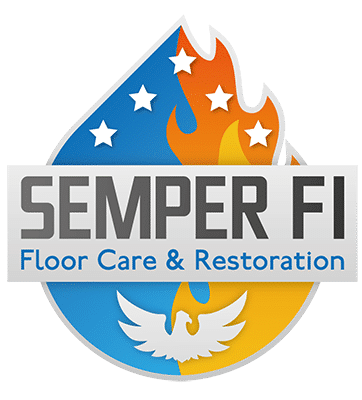Water damage can be a silent threat to your home or business, often starting in places you least expect—like your ceiling. What may seem like a small stain or minor discoloration could be an early warning sign of a much larger problem. If left unaddressed, water damage can lead to mold growth, structural deterioration, and costly repairs. Recognizing the early signs of water damage can help you take action before the problem escalates, saving you time, money, and unnecessary stress.
Understanding Water Damage on Ceilings
Water damage on ceilings is often caused by roof leaks, plumbing issues, or condensation buildup. In some cases, it may take weeks or months before noticeable signs appear. By the time you see visible damage, the issue might have already escalated, leading to costly repairs and potential health risks from mold and mildew.
Common Causes of Ceiling Water Damage
- Roof Leaks: Damaged or missing shingles, poor flashing, or clogged gutters can cause roof leaks, allowing water to seep into your home.
- Plumbing Issues: Burst pipes, leaking supply lines, or faulty connections in bathrooms and kitchens can lead to ceiling damage.
- HVAC System Problems: Improperly installed or clogged HVAC systems can result in condensation leaks.
- Appliance Malfunctions: Water heaters, washing machines, and dishwashers with faulty connections may leak and cause damage to the ceiling below.
- Storm or Flood Damage: Heavy rainfall, hurricanes, or flooding can contribute to water intrusion, damaging your ceiling over time.
1. Discoloration or Stains
One of the first and most noticeable signs of water damage is discoloration. Yellow, brown, or copper-colored stains on your ceiling often indicate a slow leak. These stains can start small but may expand over time if the leak isn’t addressed. If you notice a stain appearing suddenly after a heavy storm or rain, there is a high likelihood of a roofing issue.
2. Peeling or Bubbling Paint
Water seeping into your ceiling can cause the paint to bubble, peel, or crack. This happens when moisture gets trapped underneath the surface, weakening the adhesive properties of the paint. If you notice this issue, it’s a sign of excess moisture behind your ceiling.
3. Sagging or Warping Ceiling
A ceiling that appears to sag or bulge suggests a serious water buildup. This is a critical warning sign that the structural integrity of the ceiling could be compromised. Immediate action is necessary to prevent collapse or further deterioration. If your ceiling is starting to bend or crack, it could also mean that moisture has weakened the support beams in your home.
4. Musty Odor or Mold Growth
A persistent musty smell can indicate the presence of mold or mildew caused by excess moisture. Mold can quickly spread and pose serious health risks. If you see dark spots or fuzzy patches on your ceiling, it’s essential to address the issue promptly. Mold spores can lead to respiratory problems, allergic reactions, and other health complications if left untreated.
5. Dripping Water or Moisture Patches
Active leaks may present as visible water dripping from the ceiling or damp patches that don’t dry. These signs indicate a significant water intrusion that requires immediate professional attention to prevent further damage.
How to Prevent Ceiling Water Damage
While water damage can be unexpected, there are several proactive steps you can take to minimize risks:
- Regular Roof Inspections: Inspect your roof for missing shingles, damaged flashing, and leaks at least twice a year.
- Check Plumbing Systems: Regularly inspect pipes, supply lines, and faucets for leaks or corrosion.
- Maintain Gutters and Downspouts: Clear debris from gutters to ensure proper water drainage away from your home.
- Seal Windows and Doors: Proper sealing prevents moisture intrusion during storms.
- Monitor Indoor Humidity Levels: Use dehumidifiers and exhaust fans to control moisture levels in bathrooms and kitchens.
What to Do Next
If you notice any of these warning signs, it’s crucial to act fast. Water damage can weaken your home’s structure, create hazardous mold conditions, and lead to costly repairs if left untreated.
Why Choose Semper Fi Floor Care and Restoration?
At Semper Fi Floor Care and Restoration, we specialize in water damage restoration and offer 24/7 emergency services to protect your home or business from further damage. As a veteran-owned and operated company, we take pride in providing Marine-strong work and exceptional service. If you suspect water damage, don’t wait—call us today at (928) 236-9298 or visit semperfiyuma.com for a professional assessment.
Frequently Asked Questions
1. How do I know if I have water damage on my ceiling?
If you notice yellow or brown stains, peeling paint, sagging areas, or musty odors, you likely have water damage. At Semper Fi Floor Care and Restoration, we specialize in detecting and repairing water damage. Our licensed team (ROC# 349271) provides 24/7 water damage restoration in Yuma, AZ. Call us at (928) 236-9298 for a professional inspection.
2. What causes ceiling water damage?
Ceiling water damage is often caused by roof leaks, plumbing issues, HVAC system condensation, faulty appliances, or storm-related flooding. Identifying and fixing the source early can prevent costly repairs.
3. Can water damage on the ceiling lead to mold growth?
Yes, moisture in ceilings creates the perfect environment for mold and mildew, which can cause health problems such as allergies, respiratory issues, and eye irritation. Mold can start forming within 24-48 hours, so addressing water damage quickly is essential.
4. What should I do if I notice water stains on my ceiling?
First, try to identify and stop the source of the leak if possible. Place a bucket under any dripping water and avoid touching sagging areas. Then, contact Semper Fi Floor Care and Restoration at (928) 236-9298 for an immediate assessment. We provide fast water damage restoration services to prevent further damage.
5. How can I prevent ceiling water damage in my home?
To prevent ceiling water damage, you should:
- Inspect your roof regularly for leaks or missing shingles.
- Maintain your plumbing system to detect hidden leaks early.
- Keep gutters and downspouts clear to prevent water buildup.
- Monitor indoor humidity levels to reduce condensation risks.
6. How much does ceiling water damage restoration cost?
The cost depends on the extent of the damage and whether structural repairs are needed. Minor stains may cost less, while extensive damage requiring drywall replacement and mold removal will be higher. Contact us for a free estimate on your water damage repair needs.
7. How quickly should I address ceiling water damage?
Ceiling water damage should be addressed immediately to prevent mold growth, structural weakening, and costly repairs. At Semper Fi Floor Care and Restoration, we offer 24/7 emergency services in Yuma, AZ, ensuring rapid response to water damage issues. Call (928) 236-9298 for urgent assistance.
8. Can a ceiling collapse from water damage?
Yes, if water accumulates over time, it can weaken the ceiling’s structure, causing sagging, bulging, and even collapse. If you notice large bubbles or cracks forming, seek professional help immediately to prevent further damage.
9. Why should I hire professionals for water damage repair?
At Semper Fi Floor Care and Restoration, we provide expert water damage restoration services, ensuring that all affected areas are thoroughly dried, repaired, and protected from mold growth. As a licensed (ROC# 349271), veteran-owned company, we offer Marine-strong workmanship and guaranteed satisfaction. Call us at (928) 236-9298 for professional service in Yuma, AZ.
10. Will my insurance cover ceiling water damage?
Insurance coverage depends on the cause of the damage. Sudden incidents like a burst pipe are often covered, while gradual leaks might not be. We can assist you with insurance documentation to help you file your claim properly.


